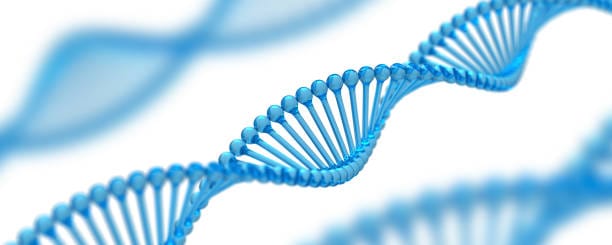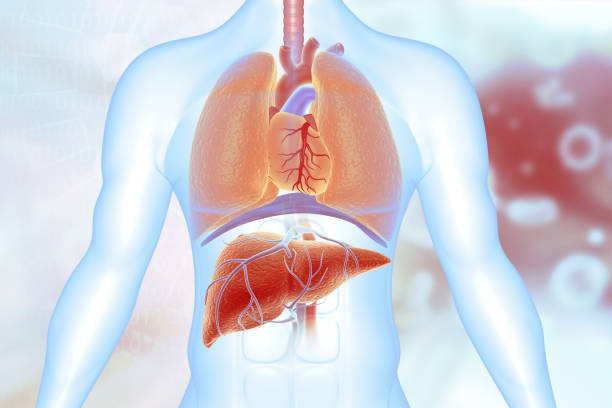Imagine waking up and feeling exhausted before your day even begins. Your joints ache, your muscles feel weak, your mind is cloudy, and no amount of sleep or coffee seems to help. You visit doctor after doctor, each running tests that come back “normal.” Yet, something deep inside you knows this isn’t how you’re meant to feel.
For millions of people around the world, this isn’t imagination—it’s the daily reality of living with an autoimmune disease. These are conditions where the immune system, the very force designed to protect you, becomes confused and begins attacking your own healthy tissues. What was once a loyal guardian turns into a source of silent rebellion.
Understanding autoimmune diseases means stepping into a biological paradox, exploring the fine line between protection and destruction, and learning how the body’s own complexity can sometimes be its greatest vulnerability.
The Immune System: Friend and Foe
To grasp autoimmune disease, we must first understand the immune system—a miraculous network of cells, organs, and chemical messengers that keeps us alive. When functioning properly, it identifies foreign invaders like bacteria, viruses, and parasites, neutralizes them, and remembers their signatures to fend them off faster next time.
This incredible system has built-in checks and balances that distinguish “self” from “non-self.” Specialized cells learn to recognize your own tissues and leave them alone. But when these safeguards fail, the immune system can mistake healthy organs, skin, joints, or even nerves for threats—and begin attacking them as if they were invaders.
No one fully understands why this breakdown occurs. Some blame genetics. Others look to environmental triggers: viral infections, gut imbalances, toxins, stress. Likely, it’s a complex dance of all these factors—a perfect storm where predisposition meets provocation.
What results is not just one disease, but a whole family of conditions, each affecting different tissues but sharing one haunting trait: the body becomes its own worst enemy.
The Spectrum of Autoimmune Diseases
There are more than 80 known autoimmune diseases, and potentially more still undiscovered. Some are relatively rare, others are alarmingly common. Conditions like rheumatoid arthritis, lupus, type 1 diabetes, multiple sclerosis, psoriasis, celiac disease, and Hashimoto’s thyroiditis are among the better-known, but there are many others that lurk under the radar.
What makes autoimmune diseases so insidious is their unpredictability. They don’t always follow a clear path. Symptoms may come and go. They may change over time. They may be mistaken for stress, aging, or psychological issues. Many patients suffer for years without a proper diagnosis.
The diversity is staggering. In rheumatoid arthritis, the immune system targets joints, causing inflammation, pain, and deformity. In multiple sclerosis, it attacks the protective covering of nerves, leading to muscle weakness, vision loss, and cognitive issues. In lupus, the attack can be widespread—affecting skin, joints, kidneys, brain, and even the heart.
Despite their differences, all autoimmune diseases share one thing: they rob people of their sense of control over their own bodies.
The Elusive Symptoms and Emotional Toll
It often starts subtly. A rash that won’t go away. A wave of fatigue that feels like a lead blanket. Achy joints. Digestive issues. Brain fog. Unexplained fevers. Some people experience hair loss, weight changes, depression, or even sensitivity to sunlight. Each symptom might seem insignificant in isolation—but together, they form a sinister pattern.
The road to diagnosis can be long and frustrating. Blood tests, imaging scans, and biopsies may offer hints, but many autoimmune diseases lack a single definitive test. Instead, diagnosis relies on a constellation of symptoms, lab markers, and clinical suspicion.
This uncertainty is emotionally exhausting. Patients are often dismissed, misdiagnosed, or told it’s all in their heads. The psychological impact of not being believed can be devastating. Many begin to doubt themselves, to internalize the idea that maybe they are just anxious or lazy.
Even after diagnosis, life doesn’t suddenly become easier. Autoimmune diseases often follow a waxing and waning course—periods of relative calm known as remission, followed by sudden flare-ups where symptoms explode in intensity. This unpredictability can derail careers, strain relationships, and shatter long-term plans.
The emotional toll is compounded by the invisibility of the illness. On the outside, many patients appear fine. On the inside, they are fighting a constant war—a war where victory is defined not by cure, but by management.
What Science Knows About Causes
Despite decades of research, the exact causes of autoimmune diseases remain elusive. What is clear is that multiple factors work together to trigger disease in genetically susceptible individuals.
Genetics plays a significant role. Certain genes, especially those related to the human leukocyte antigen (HLA) system, increase the risk of specific autoimmune conditions. But having the genes doesn’t guarantee disease—something must pull the trigger.
Environmental exposures are increasingly implicated. Viral infections like Epstein-Barr virus have been linked to multiple sclerosis and lupus. Certain gut bacteria—or the lack thereof—may influence immune regulation. Exposure to toxins like mercury or industrial chemicals may disrupt immune tolerance. Even hormonal shifts, particularly in women, can act as a catalyst.
Autoimmune diseases disproportionately affect women, often striking during childbearing years. Estrogen appears to influence immune function, although how remains unclear. The sex difference is one of the most striking and mysterious aspects of these diseases.
Stress, both physical and emotional, is another potent factor. Trauma, grief, overwork, and chronic anxiety can all tip the immune system out of balance. Many patients trace their first symptoms to a particularly stressful life event—a surgery, an infection, a divorce.
It’s likely that no single cause is sufficient. Rather, it’s a combination—a genetic match ignited by environmental flame, fanned by hormonal wind, and sustained by the immune system’s own feedback loop.
The Evolving Landscape of Treatments
When it comes to treating autoimmune diseases, the goal is not to “cure”—at least not yet—but to manage. To calm the immune system, reduce inflammation, alleviate symptoms, and preserve function.
The first-line weapons are often corticosteroids like prednisone. These powerful drugs suppress inflammation quickly, offering relief from pain and swelling. But long-term use comes with serious side effects—bone loss, weight gain, mood swings, diabetes—making them a short-term solution.
Nonsteroidal anti-inflammatory drugs (NSAIDs) like ibuprofen and naproxen can help with pain and swelling, though they don’t slow the disease itself. Disease-modifying antirheumatic drugs (DMARDs), such as methotrexate, aim to interrupt the immune attack more fundamentally.
In recent years, biologic therapies have transformed the treatment landscape. These are genetically engineered proteins that target specific parts of the immune system—like tumor necrosis factor (TNF), interleukins, or B-cells. Drugs like Humira, Enbrel, and Rituxan have brought relief to many, although they also carry risks, including infections and high cost.
Some patients benefit from plasmapheresis (a process that filters the blood), intravenous immunoglobulins, or newer targeted therapies like JAK inhibitors. Clinical trials continue to explore innovative approaches—stem cells, gene editing, personalized medicine.
But drugs are only part of the picture. Treatment must be holistic. Lifestyle changes—anti-inflammatory diets, gentle exercise, sleep hygiene, stress reduction—can significantly impact symptom severity. Functional medicine practitioners increasingly explore gut health, food sensitivities, and micronutrient imbalances.
Healing, in this context, is not about erasing disease. It’s about restoring agency, rebuilding vitality, and learning to live vibrantly in the face of chronic challenge.
The Role of Diet and the Microbiome
Food has a profound impact on the immune system. What we eat can either stoke the fires of inflammation or help douse them. Many autoimmune patients report symptom improvement after eliminating certain foods—especially gluten, dairy, processed sugars, and artificial additives.
While evidence is still evolving, specific diets have gained popularity among patients and practitioners. The autoimmune protocol (AIP), for example, eliminates potential inflammatory triggers and then reintroduces them carefully. Paleo, anti-inflammatory, low-FODMAP, and plant-based diets also show promise for some individuals.
The gut microbiome—the trillions of bacteria living in our intestines—has emerged as a key player in autoimmunity. These microbes train the immune system, regulate inflammation, and maintain the intestinal barrier. Dysbiosis, or an imbalance in microbial populations, has been linked to conditions like inflammatory bowel disease, rheumatoid arthritis, and even multiple sclerosis.
Supporting the gut through probiotics, prebiotics, fermented foods, and fiber-rich diets may help restore immune tolerance. However, what works for one person may not work for another. Personalized approaches based on microbiome testing and symptom tracking are increasingly becoming the norm.
Mental Health and the Invisible Battle
Living with autoimmune disease can be an emotional marathon. The physical pain is only part of the burden. The constant uncertainty—of flares, side effects, financial strain, misunderstood symptoms—can wear down even the strongest spirit.
Depression and anxiety are common co-travelers. Studies show that people with autoimmune diseases have significantly higher rates of mood disorders, whether due to the disease itself, inflammation in the brain, or the sheer weight of living with an unpredictable illness.
Support is vital. Therapy, both psychological and physical, can be transformative. So can support groups, whether in person or online, where people can share experiences, advice, and solidarity. There is a unique comfort in hearing someone say, “I believe you,” and really meaning it.
Mind-body practices like yoga, meditation, breathwork, and tai chi have shown promising results in reducing pain and improving quality of life. They offer not just physical benefits but a sense of empowerment in a world where control often feels elusive.
Hope on the Horizon
Though autoimmune diseases remain complex and incurable, hope is not in short supply. Advances in genetics, immunology, and personalized medicine are accelerating. Researchers are developing vaccines to prevent disease onset, stem cell therapies to reboot the immune system, and artificial intelligence tools to detect early patterns before symptoms explode.
Clinical trials are testing cutting-edge drugs that target specific pathways with fewer side effects. Some researchers are exploring tolerogenic vaccines—agents that retrain the immune system to stop attacking itself. Others are experimenting with rebalancing gut microbiota or even engineering immune cells to be more discerning.
But perhaps the greatest shift is cultural. Patients are no longer passive recipients of care—they are active participants, advocates, and warriors. Their voices are reshaping how medicine understands chronic illness. No longer will vague symptoms be brushed off. No longer will pain be dismissed.
Living Fully, Even with Autoimmunity
A diagnosis of autoimmune disease may alter the path of a person’s life, but it doesn’t define them. People with these conditions are artists, parents, teachers, scientists, dreamers. They climb mountains, write books, start businesses. They fight every day—not just to survive, but to thrive.
Understanding autoimmune disease is more than learning medical facts. It’s about acknowledging the courage it takes to live in a body that feels like a battleground. It’s about listening—to the science, to the symptoms, to the patient. It’s about rebuilding trust—between doctor and patient, between mind and body, between immune system and self.
Autoimmune disease is not the end of the story. It’s a turning point—a call to live more intentionally, to seek truth, balance, and healing. In every setback is a spark of resilience. In every flare, a reminder of how fierce the human spirit can be.
And in every person affected, there is a deeper message: that even when the body is at war, the heart can still choose peace.






